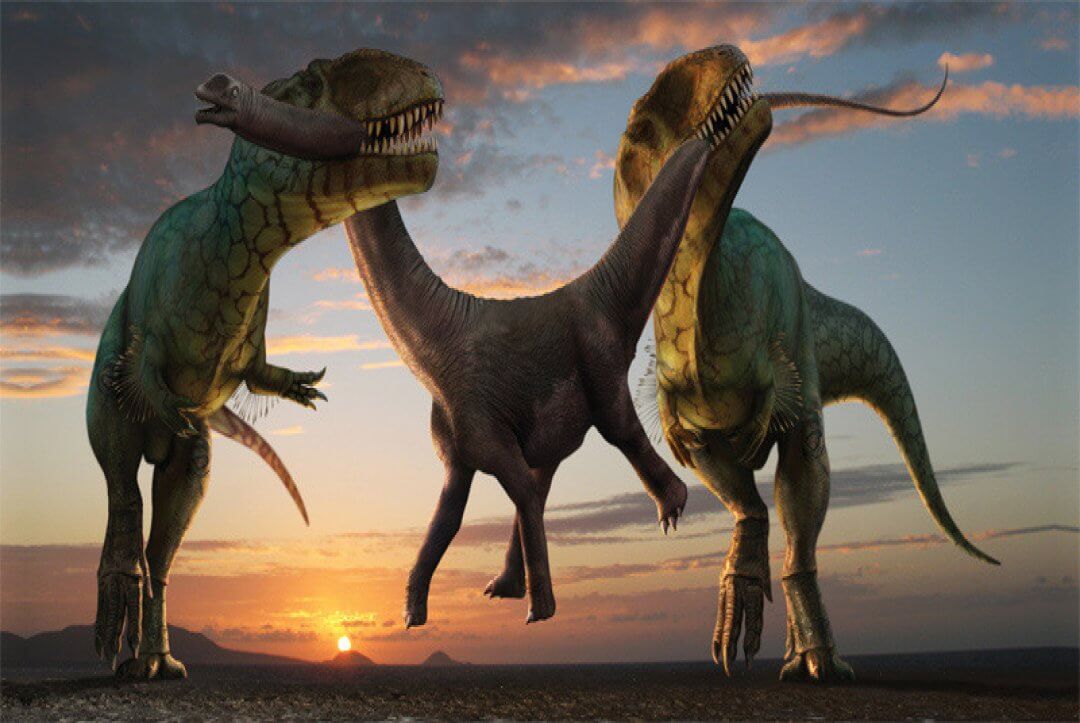Endothermy was widespread among both avian and non-avian dinosaurs, a study suggests, so the metabolic strategy is unlikely to account for birds’ survival through the mass
Many dinosaurs were likely warm-blooded with high metabolic rates that resembled those of modern birds, according to a study published yesterday (May 25) in Nature. Comparing samples from more than 50 vertebrate species, some modern and some extinct, researchers found evidence that endothermy, or warm-bloodedness, was already widespread before the mass extinction event at the end of the Cretaceous period, challenging the widely held idea that differences in metabolism explain why birds fared so much better than non-avian dinosaurs.

“This is really exciting for us as paleontologists,” study coauthor and Caltech postdoc Jasmina Wiemann says in a press statement. “The question of whether dinosaurs were warm- or cold-blooded is one of the oldest questions in paleontology, and now we think we have a consensus, that most dinosaurs were warm-blooded.”
Endothermy, the ability to maintain a constant body temperature by ramping up one’s metabolic rate, is considered a key innovation in vertebrate evolution, as it allows animals to inhabit a wide range of areas with varying climate conditions, maintain high activity levels, and quickly adjust to new environments. By contrast, ectothermic, or cold-blooded, animals have much lower metabolic rates and typically rely on external sources of heat, such as the sun, to raise body temperature.

Dinosaurs are popularly thought of as cold-blooded animals similar to many extant reptiles, although some researchers have suggested ways that certain species may have been able to maintain a constant body temperature without adjusting metabolic rate. One way, known as gigantothermy, involves being big and bulky—thus having a higher volume-to-surface ratio, which reduces changes in body temperature.

However, the new study, which compared fossilized products of metabolism, including signals of what are known as advanced lipoxidation end-products, in dino bones with similar chemicals from modern animals, indicates that most dinosaurs were in fact true endotherms after all. The few taxa that were cold-blooded, such as the groups containing Tricerotops and Stegosaurus, evolved to be so secondarily. In other words, they had originally been endothermic, but lost that ability over time.

Microscopic view of extracted soft tissues from the bones of one of the dinosaur specimens© J. WIEMANN
The results are “not entirely surprising, but it’s definitely good to have some estimate of metabolic levels,” Enrico Rezende, an evolutionary biologist at Pontifical Catholic University of Chile who was not involved in the work tells Popular Science. He adds that the study also suggests that there is a spectrum of cold- to warm-bloodedness rather than a clearly defined binary. “Essentially what this shows is that we have this whole gradient of metabolic levels.”

The findings also imply that endothermy can’t fully explain why warm-blooded animals such as birds escaped the fate of the rest of the dinosaurs 65 million years ago, though the paper doesn’t offer an alternate explanation. “We showed that metabolism is not the reason why birds were the only group of dinosaurs to survive the mass extinction event at the end of the Cretaceous period,” Wiemann says in a separate press statement. “Many dinosaurs with metabolisms as efficient as those in modern birds went extinct.”
Source: scinews.paleontology








